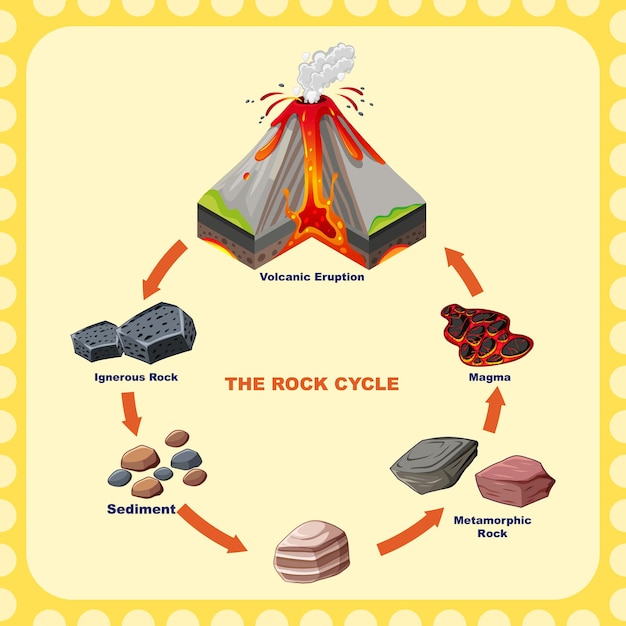Sedimentary Rocks – Fascinating Facts and Trivia

Sedimentary rocks are formed by the accumulation and compaction of sediments over time.
Sedimentary rocks preserve the history of the Earth’s surface.
Sedimentary rocks can contain fossils that provide evidence of past life forms.
The layers in sedimentary rocks can reveal changes in climate and environment.
Sedimentary rocks are often found near bodies of water.
Sandstone is a type of sedimentary rock made up of sand-sized grains.
Limestone is a sedimentary rock that is primarily composed of the mineral calcite.
Shale is a fine-grained sedimentary rock that easily breaks into thin layers.
Sedimentary rocks can be used as building materials.
The Grand Canyon showcases beautiful layers of sedimentary rock.
Sedimentary rocks can contain valuable natural resources, such as coal and oil.
Sedimentary rocks can be classified based on their composition and texture.
Sedimentary rocks are often used to study ancient environments and geological history.
Sedimentary rocks can be formed in various settings, including rivers, lakes, and oceans.
Conglomerate is a type of sedimentary rock that is made up of rounded gravel-sized particles.
Sandstone can have different colors depending on the minerals present.
Sedimentary rocks can provide clues about past climate conditions, such as the presence of glacial deposits.
Gypsum is a sedimentary rock that is commonly used in the construction industry.
Sedimentary Rocks – Fascinating Facts and Trivia part 2
Sedimentary rocks are often found on the Earth’s surface due to erosion and weathering.
Sedimentary rocks can be formed from the remains of plants and animals.
Sedimentary rocks can have distinct layering patterns known as bedding planes.
Chalk is a type of sedimentary rock made up of microscopic shell fragments.
Sedimentary rocks can contain layers of volcanic ash from past eruptions.
Sedimentary rocks can be porous, allowing them to store and transport groundwater.
The study of sedimentary rocks can help in understanding the history of ancient climates.
Sedimentary rocks can exhibit different levels of hardness, depending on their composition.
The formation of sedimentary rocks is a slow process that can take millions of years.
Sedimentary rocks can undergo changes due to pressure and heat, forming metamorphic rocks.
Sedimentary rocks can be found in various parts of the world, providing insight into different geological processes.
Sandstone cliffs are a common sight in desert landscapes, formed by wind-blown sands.
Sedimentary rocks can be used for decorative purposes, such as in landscaping.
Sedimentary rocks can contain valuable minerals, such as gold and silver.
The study of sedimentary rocks is important for understanding the Earth’s history and its future.
Sedimentary rocks can be used to date fossils and determine their age.
Sedimentary rocks can reveal information about the ancient plants and animals that lived on Earth.
Some sedimentary rocks, like coal, can be used as a source of energy.
Sedimentary rocks can be easily identified by their distinct layering and texture.
Sedimentary rocks can change over time due to weathering and erosion processes.
Sedimentary rocks can be used to reconstruct past environments and ecosystems.
The cliffs of Dover in England are made up of white, chalky sedimentary rocks.
Sedimentary rocks play an important role in the water cycle, as they can store and release water.
Sedimentary rocks can be used as natural filters, purifying groundwater.
Sedimentary rocks can contain evidence of ancient volcanic activity.
Sedimentary rocks can provide a record of past geological events, such as earthquakes and landslides.
Sedimentary rocks are a key component of the Earth’s crust, representing a significant portion of its volume.

